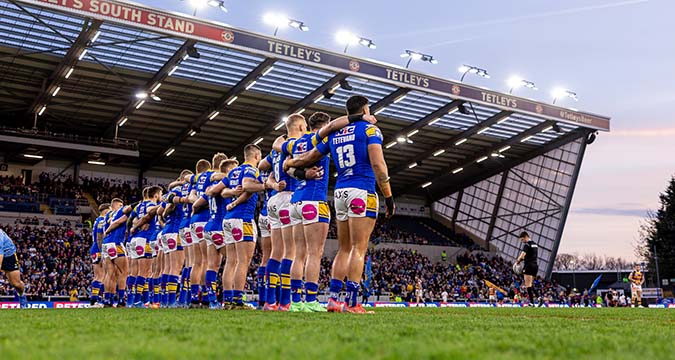
There are some one-sided games cropping up in Super League recently, as well as some very tight matches.
The games in Perpignan and Wakefield this weekend couldn’t have been much tighter, with the latter game going to a golden point against St Helens and the former being won very near the end of normal time by a field-goal from Sam Tomkins.
At the other end of the scale, Leeds surprisingly defeated Wigan by a 30-point margin, while Castleford came from four points down at half-time to hammer Hull FC by 28 points.
The problem for a lot of teams, of course, is that they are well under strength because of the serious number of injuries that most clubs are suffering from.
The problem for those clubs is that fans can be unforgiving of heavy defeats, even to an opposition with much fewer injury problems.
One suggestion I would like to make to the RFL and, come to think of it, to Super League and to IMG, who are currently taking soundings on how we might make Rugby League more attractive to the general public, relates to how we use the salary cap.
The maximum amount of the salary cap is nominally set at a figure of £2.1 million, but the actual figure that each club will be paying its players depends on several factors unique to each club.
For example, each club can employ a maximum of two marquee players, who can be paid any amount above. £150,000 per year, but for salary cap purposes their salary will be recorded as being £150,000. Then there are dispensations for the home-grown players its squad contains and other factors that mean that a club could in theory pay well beyond the base salary cap figure.
It’s probably fair to guess that the maximum figure for most Super League clubs is somewhat more than £2.1 million, while some clubs will be paying much less than that figure.
I remember being told some time ago by one leading figure in the game that success depends on how effective each club is at managing the salary cap.
The objective is to recruit or develop players who will play above their salary cap values, while offloading players who don’t play up to their salary cap values.
Hull FC recently took the latter step when they agreed to part company with one of their marquee players, Josh Reynolds, whose performances hadn’t justified the salary he was being paid.
The problem for those of us who are looking in from the outside is that we don’t know what each individual player is being paid. We can all make a judgement about the performances of individual players, but it’s difficult to make a judgement on the value for money when we are watching a team that might have players on vastly different salary scales.
That wouldn’t be a problem in the United States if we watched the NFL, which publishes the details of the salary of every player in the competition.
So in America, everyone knows that the Green Bay Packers quarterback Aaron Rodgers is the highest paid player in the competition, earning a cool $50.3 million per year under his current contract.
I think it’s about time we had some more information about our own salary cap.
I’m not suggesting that every player’s salary should be made public.
But I would like to see that when a club releases its matchday 17, that it also reveals the total salary cap value of the players it has listed in its squad.
That would mean that teams with lots of injuries would show a significantly lower figure than those with a full squad and it would perhaps be easier for the fans to applaud their efforts, even if they lose the game.
And adopting that practice would put to be some of the suspicions, no doubt unfounded, that some clubs are able to exploit and perhaps exceed the salary cap.
I think we’d be shocked by some of the disparities we would find between different clubs.
Player safety paramount
Last week there was a conference at Leeds Beckett University about optimising player welfare in contact sports through mouthguard technology.
The conference was a collaboration between the Rugby Football League, Rugby Football Union the Love of the Game campaign and LBU’s Carnegie School of Sport, and included experts on concussion and impact sensors from Australia, Canada, South Africa, the UK and USA.
Instrumented mouthguards are now being used in sport to measure head accelerations and head impacts in sport. Mouthguard technology allows sports to monitor athlete exposure and ensure that individual welfare remains a priority.
The delegates to the conference were discussing and sharing best practice on optimal methods of applying instrumented mouthguards for the benefit of sports and players.
We now find that many Rugby League teams wear these specially adapted mouthguards when they take to the field.
Given the concern about the long-term impact of head injuries, this technology hasn’t arrived a moment too soon.
The above content is also available in the regular weekly edition of League Express, on newsstands every Monday in the UK and as a digital download. Click here for more details.
